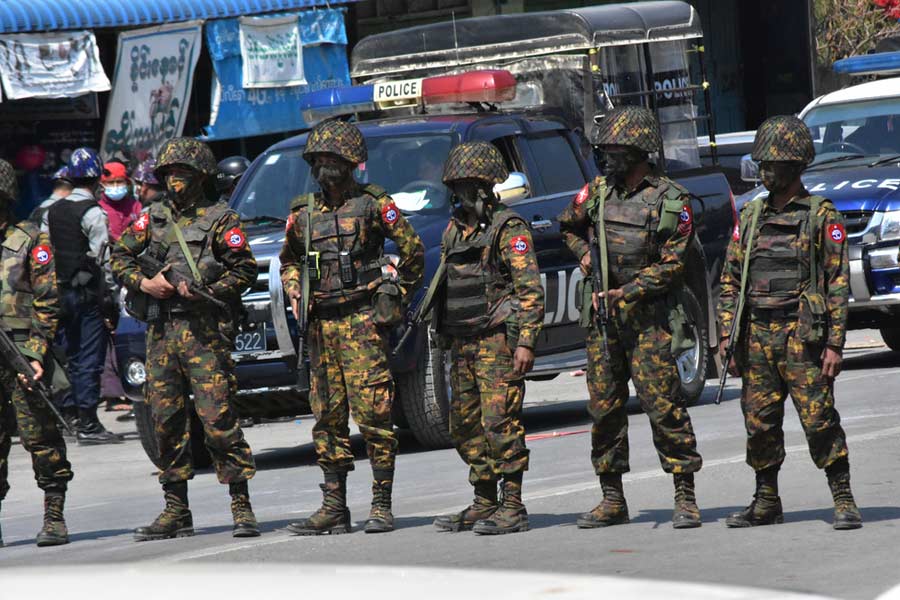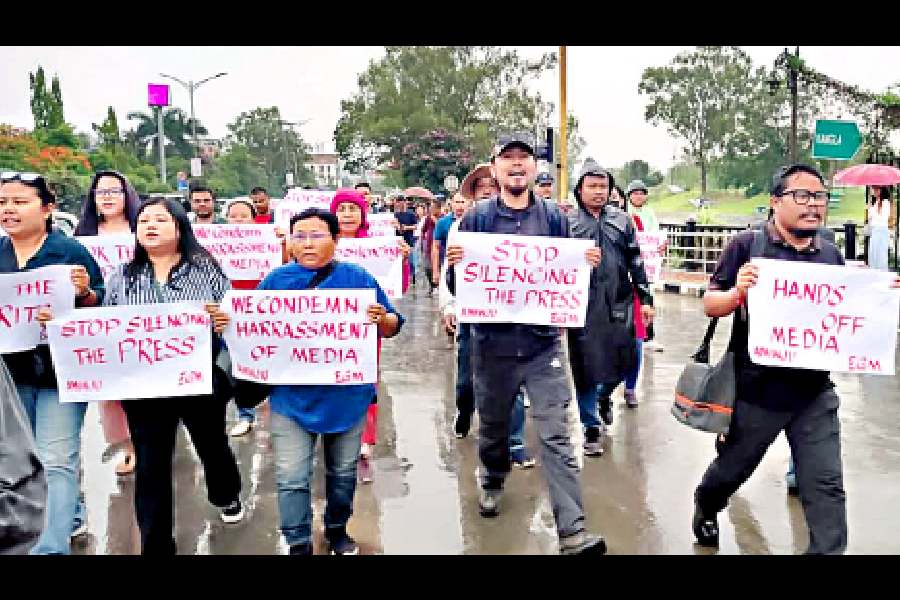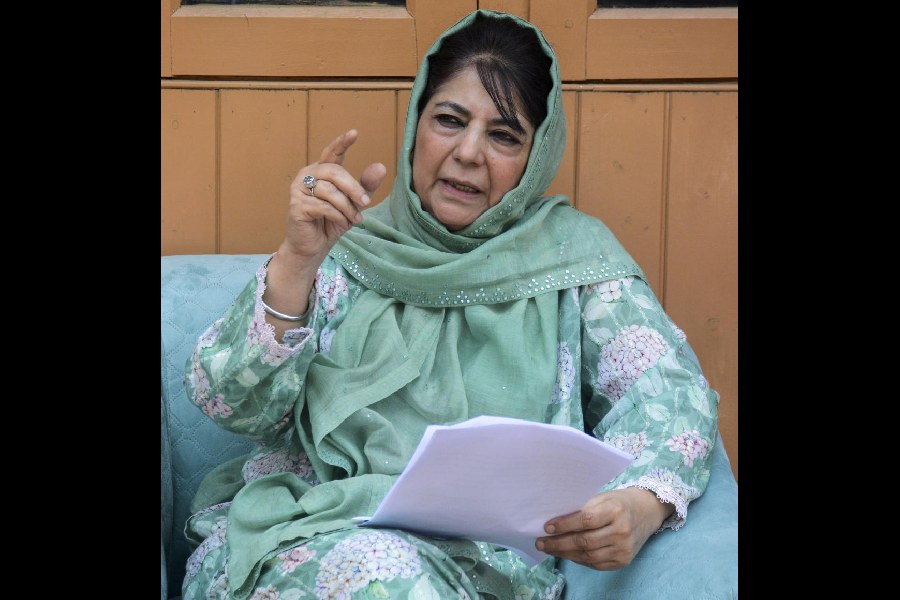 |
| A woman cries after identifying the body of her son who died in the stampede at a mortuary in Kochi. (AP) |
Hyderabad, Jan. 17: Bhatti Thuppanna believes it is the extra weight he has piled on and the blessings of Lord Ayyappa that helped him return alive from Friday’s Sabarimala stampede.
A retail trader of Narayanpet town in Andhra’s Mahbubnagar district, the 38-year-old had been trekking down from the hilltop shrine in pitch darkness after sighting the Makara Jyothi, the star that appears on January 14, when disaster struck.
“I had kept my eyes peeled for the jyothi darshan, and after seeing it, was walking back to our vehicle. It was dark all around and there was nothing but blackness everywhere,” Thuppanna, who returned to Hyderabad last night, said.
“Next moment, I don’t know what happened but at least 60-70 people had fallen on top of me. I didn’t know what to do, so I just prayed to Ayyappa to save my life. When rescuers revived me with water, I couldn’t believe I was alive.”
Thuppanna had taken the Ayyappa diksha to lose weight and had been fasting for 40 days till Friday. Only 5 feet 3 inches tall, he had managed to bring down his weight from 112kg at the start of fasting to around 90kg.
“It’s thanks to Ayyappa that I’m still living. Hundreds of people walked over me and fell on me when I was on the ground. My extra weight must be the reason I am still alive,” Thuppanna, whose weight should ideally be 75kg, said.
A senior trauma specialist said fat may sometimes protect people from mild trauma, but Thuppanna should consider himself lucky. “A particularly thick layer of fat may serve as a cushion and protect internal organs from severe injury,” said Hilal Ahmed, a consultant in emergency medicine at the Asian Institute of Medical Sciences in Faridabad, near Delhi.
“But it doesn’t apply all the time — a fat person who falls is likely to be hurt more than a lean person. Fat does not guarantee protection during a stampede.”
Many co-pilgrims from the Andhra trader’s group, however, were not as lucky. The bodies of three first-time visitors — Srinivas, Govind and Prabhakar — were brought back on the same flight as Thuppanna. Ten pilgrims from Nizamabad have died and five more from Chirala, most between 20 and 35 years of age.
Many of the survivors, who sustained injuries, blamed the Kerala temple authorities for not making adequate arrangements. Govindaswamy, who had gone to the shrine with a group of eight from Srikakulam and lost three members, did not mince words.
“The temple authorities were aware there would be a large congregation on Friday. But they did not make adequate arrangements for the safety of the pilgrims. The lighting was poor. Even traffic was not properly regulated,” he said.
Bodies of 22 Ayyappa devotees landed at Shamshabad airport last night in six chartered flights. Five ministers received the bodies before they were handed over to family members.
In contrast to Sabarimala, there have been few complaints about crowd management at the Tirumala Tirupati Devasthanam, which handles about two lakh pilgrims daily.
“There can be no stampede in Tirumala,” said K.V. Ramanachary who was the Devasthanam executive officer for over three years. “Stampedes happen only when the crowds are not managed.”
The Tirumala-Tirupati complex has 30-35 halls that can accommodate about 75,000 people. There are adequate washrooms, medical and refreshment facilities as well as provisions for pilgrims’ entertainment.
Between 500 and 2,000 people are allowed entry into the sanctum sanctorum at a time. The pilgrims are guided by volunteers and temple staff, who ensure they have a quick darshan of the deity and exit fast.
“We have at least five to 10 temple officials at every point of pilgrim entry and exit to ensure their safety,” said I.Y.R Krishna Rao, the executive officer of the Devasthanam.











